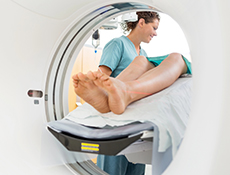The treatment for common knee disorders depends on the specific condition. Rest, ice, compression, and elevation (R.I.C.E.) can help alleviate pain and swelling for many knee issues, while physical therapy may be recommended to strengthen muscles and improve flexibility. In some cases, braces or orthotics may provide support. Non-steroidal anti-inflammatory drugs (NSAIDs) can help manage pain. However, severe cases may require surgical intervention, such as arthroscopy or knee replacement. Consultation with a healthcare professional is crucial for an accurate diagnosis and tailored treatment plan; seek personalised advice from a healthcare professional.
Non-Surgical Treatment Options
Not all cases of knee injuries or knee pain require surgery. Here are some of the types of treatments that your doctor may recommend to manage your pain and improve your quality of life.
Lifestyle Changes
Modifying activities to avoid high-impact exercises and making lifestyle changes like weight loss can help decrease pain and stress on the knee joint in arthritis.
Physiotherapy
Physical therapy is a treatment option that involves exercises to strengthen muscles, improve flexibility, and restore function.
PRP (Platelet-Rich Plasma) Therapy
This involves the injection of concentrated platelets to promote healing in injured tissues.
Stem Cell Therapy
With this form of treatment, stem cells are administered via injection to encourage tissue repair.


Surgical Treatment
Our team of specialists aims to provide comprehensive and high standards of care, including diagnostic, surgical and rehabilitative management.
Some of the surgical services we offer:
Total Knee Replacement
During total knee replacement (which is also called total knee arthroplasty), your surgeon removes the damaged surfaces of the knee joint and replaces them with metal and plastic components referred to as the prosthesis or implant. The implant is designed to replace the function of a healthy knee.
The Alternative to Traditional Total Knee Replacement Surgery: Mako Total Knee Robotic-Arm Assisted Surgery
If you’re one of the millions of global citizens suffering from pain caused by arthritis or an injury to the knee, and you haven’t experienced adequate relief with conservative treatment options, Mako Robotic-Arm Assisted Surgery might be the solution for you.
In a clinical study:
- Mako protected soft tissue and ligaments from damage.
- Mako patients surveyed 6 months after surgery reported lower pain scores than those who received a conventional joint replacement.
- Mako patients surveyed 6 months after surgery reported better patient satisfaction scores compared to those who received a conventional joint replacement.
How Mako Technology Works:

Plan
Personalized surgical plan
The first step is patient-specific surgical planning. Before surgery, a CT scan of your knee is taken to develop a 3D virtual model of your unique joint. Your doctor uses this model to evaluate your bone structure, disease severity, joint alignment and even the surrounding bone and tissue, so they can determine the optimal size, placement and alignment of your implant.

Assess
Range-of-motion assessment
Throughout your procedure, Mako provides real-time data to your surgeon. This allows them to continuously assess the movement and tension of your new joint and adjust your surgical plan if desired.

Prepare
Arthritic bone removal
In the operating room, your surgeon guides Mako’s robotic arm to remove the arthritic bone and cartilage from the knee. A virtual boundary provides tactile resistance to help the surgeon stay within the boundaries defined in your surgical plan.

Insert
Implant placement
With the diseased bone gone, your implant is placed into the knee joint. Then it’s off to the recovery room to begin your journey to strengthening your new joint.
Partial knee replacement
If you’ve caught the arthritic damage early, you may be eligible for a partial knee replacement. This is where the disease has not progressed to all 3 compartments of the knee, allowing the surgeon to replace fewer parts.
- Unicondylar Knee Replacement: Only one area (or compartment) of the joint is replaced.
- Patellofemoral Knee Replacement: This type of knee replacement replaces the kneecap (or patella) and the grove at the lower end of the thigh bone (or femur).
- Bicompartmental Knee Replacement: This knee replacement type affects two compartments of the knee – the inside (medial) and knee cap.
The Alternative To Traditional Total Knee Replacement Surgery: Mako Partial Knee Robotic-Arm Assisted Surgery
In clinical studies, Mako Partial Knee resulted in:
- More accurate bone removal and implant placement, which may result in improved outcomes and functioning of the knee.
- Less pain in the days and weeks following surgery.
- Shorter hospital stays.
- Quicker recovery, where 9 out of 10 patients were walking without an aid, such as a cane or walker, three weeks after surgery.
- 91% of patients being satisfied or very satisfied 5 years after surgery.
Is Mako an Option for Me?
Mako Partial Knee is for people with:
- Severe knee pain or stiffness resulting from: non-inflammatory degenerative joint disease (including osteoarthritis, traumatic arthritis, or avascular necrosis), rheumatoid arthritis or post-traumatic arthritis
- Those who haven’t experienced adequate relief with conservative treatment options, like bracing, medication or joint fluid supplements
- Early to mid-stage osteoarthritis that doesn’t affect all 3 compartments of the knee

How Mako Technology Works:
Plan
Personalized surgical plan
The first step is patient-specific surgical planning. Before surgery, a CT scan of your knee is taken to develop a 3D virtual model of your unique joint. Your doctor uses this model to evaluate your bone structure, disease severity, joint alignment and even the surrounding bone and tissue, so they can determine the optimal size, placement and alignment of your implant.
Assess
Range-of-motion assessment
Throughout your procedure, Mako provides real-time data to your surgeon. This allows them to continuously assess the movement and tension of your new joint and adjust your surgical plan if desired.
Prepare
Arthritic bone removal
In the operating room, your surgeon guides Mako’s robotic arm to remove the arthritic bone and cartilage from the knee. A virtual boundary provides tactile resistance to help the surgeon stay within the boundaries defined in your surgical plan.
Insert
Implant placement
With the diseased bone gone, your implant is placed into the knee joint. Then it’s off to the recovery room to begin your journey to strengthening your new joint.
Advances in Knee Surgery
Arthroscopic Surgery
A minimally invasive surgery which utilises an arthroscope to diagnose and treat various joint issues.
Robotic Surgery
As one of the leading smart hospitals in Malaysia, Sunway Medical Centre,Sunway City is the first to be equipped with two robotic systems, which are utilised in procedures such as total knee and partial knee replacements
Robotic technology creates 3D models of patients' bones, aiding surgeons in precise planning, resulting in accurate implant positioning, minimal tissue damage, and faster recovery.

Explore how robotic surgery can address conditions of the knee effectively, and learn more about its benefits and advantages over conventional surgery that allows for a smoother recovery and improved outcomes to restore your mobility and quality of life.
Get Started

